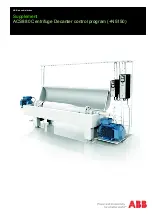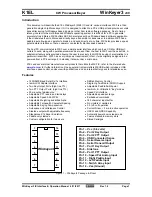Chapter 18 Enhanced Direct Memory Access (eDMA)
MPC5602P Microcontroller Reference Manual, Rev. 4
Freescale Semiconductor
411
Figure 18-21. eDMA operation, part 3
18.6.3
eDMA performance
This section addresses the performance of the eDMA module, focusing on two separate metrics. In the
traditional data movement context, performance is best expressed as the peak data transfer rates achieved
using the eDMA. In most implementations, this transfer rate is limited by the speed of the source and
destination address spaces. In a second context where device-paced movement of single data values
to/from peripherals is dominant, a measure of the requests that can be serviced in a fixed time is a more
useful metric. In this environment, the speed of the source and destination address spaces remains
important, but the microarchitecture of the eDMA also factors significantly into the resulting metric.
The peak transfer rates for several different source and destination transfers are shown in
. The
following assumptions apply to
:
•
Internal SRAM can be accessed with zero wait-states when viewed from the system bus data phase.
•
All slave reads require two wait-states, and slave writes three wait-states, again viewed from the
system bus data phase.
•
All slave accesses are 32-bits in size.
Sl
ave In
te
rface
eDMA
eDMA Done
System B
u
s
Slave Write Data
Slave Write Address
Bus Write Data
Slave Read Data
Bus Address
eDMA Engine
TCD0
TCD
n
– 1*
eDMA Peripheral
Bus Read Data
Request
SRAM
Transfer Control Descriptor
(TCD)
SRAM
Data Path
Address
Path
Control
Program Model/
Channel Arbitration
*
n
= 16 channels


















